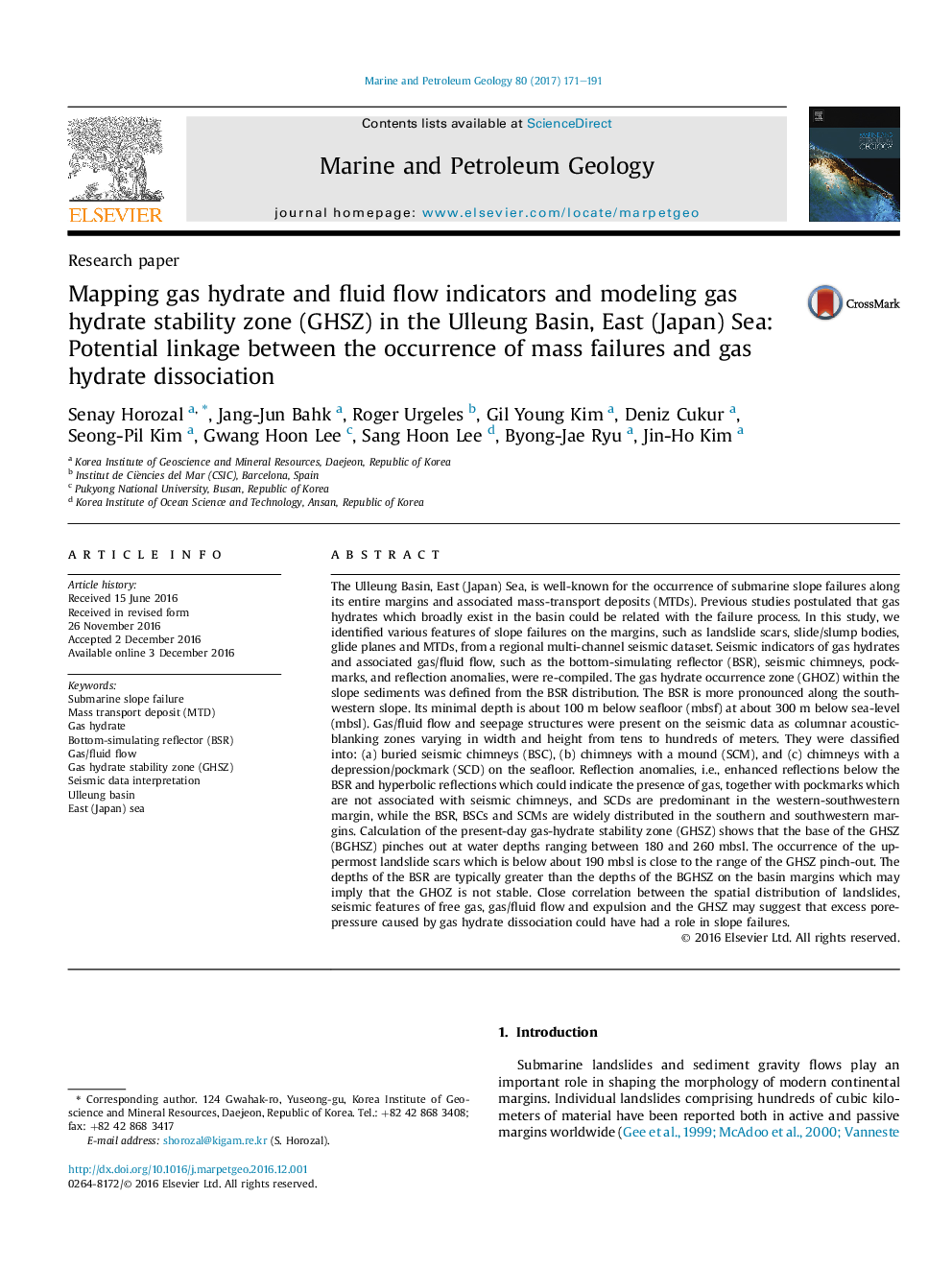| کد مقاله | کد نشریه | سال انتشار | مقاله انگلیسی | نسخه تمام متن |
|---|---|---|---|---|
| 5782202 | 1637147 | 2017 | 21 صفحه PDF | دانلود رایگان |
عنوان انگلیسی مقاله ISI
Mapping gas hydrate and fluid flow indicators and modeling gas hydrate stability zone (GHSZ) in the Ulleung Basin, East (Japan) Sea: Potential linkage between the occurrence of mass failures and gas hydrate dissociation
دانلود مقاله + سفارش ترجمه
دانلود مقاله ISI انگلیسی
رایگان برای ایرانیان
موضوعات مرتبط
مهندسی و علوم پایه
علوم زمین و سیارات
زمین شناسی اقتصادی
پیش نمایش صفحه اول مقاله

چکیده انگلیسی
The Ulleung Basin, East (Japan) Sea, is well-known for the occurrence of submarine slope failures along its entire margins and associated mass-transport deposits (MTDs). Previous studies postulated that gas hydrates which broadly exist in the basin could be related with the failure process. In this study, we identified various features of slope failures on the margins, such as landslide scars, slide/slump bodies, glide planes and MTDs, from a regional multi-channel seismic dataset. Seismic indicators of gas hydrates and associated gas/fluid flow, such as the bottom-simulating reflector (BSR), seismic chimneys, pockmarks, and reflection anomalies, were re-compiled. The gas hydrate occurrence zone (GHOZ) within the slope sediments was defined from the BSR distribution. The BSR is more pronounced along the southwestern slope. Its minimal depth is about 100Â m below seafloor (mbsf) at about 300Â m below sea-level (mbsl). Gas/fluid flow and seepage structures were present on the seismic data as columnar acoustic-blanking zones varying in width and height from tens to hundreds of meters. They were classified into: (a) buried seismic chimneys (BSC), (b) chimneys with a mound (SCM), and (c) chimneys with a depression/pockmark (SCD) on the seafloor. Reflection anomalies, i.e., enhanced reflections below the BSR and hyperbolic reflections which could indicate the presence of gas, together with pockmarks which are not associated with seismic chimneys, and SCDs are predominant in the western-southwestern margin, while the BSR, BSCs and SCMs are widely distributed in the southern and southwestern margins. Calculation of the present-day gas-hydrate stability zone (GHSZ) shows that the base of the GHSZ (BGHSZ) pinches out at water depths ranging between 180 and 260 mbsl. The occurrence of the uppermost landslide scars which is below about 190 mbsl is close to the range of the GHSZ pinch-out. The depths of the BSR are typically greater than the depths of the BGHSZ on the basin margins which may imply that the GHOZ is not stable. Close correlation between the spatial distribution of landslides, seismic features of free gas, gas/fluid flow and expulsion and the GHSZ may suggest that excess pore-pressure caused by gas hydrate dissociation could have had a role in slope failures.
ناشر
Database: Elsevier - ScienceDirect (ساینس دایرکت)
Journal: Marine and Petroleum Geology - Volume 80, February 2017, Pages 171-191
Journal: Marine and Petroleum Geology - Volume 80, February 2017, Pages 171-191
نویسندگان
Senay Horozal, Jang-Jun Bahk, Roger Urgeles, Gil Young Kim, Deniz Cukur, Seong-Pil Kim, Gwang Hoon Lee, Sang Hoon Lee, Byong-Jae Ryu, Jin-Ho Kim,